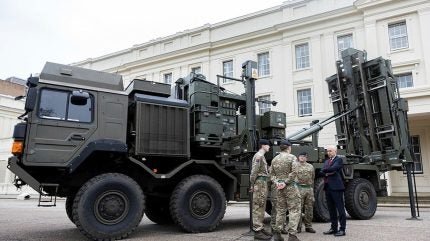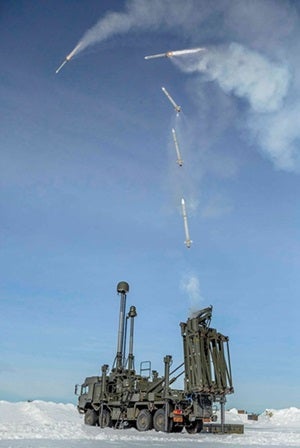UK fills air defence gap with six new Land Ceptor systems

The UK will double the number of deployable air and missile defence units on British soil through a new, three-year contract with Europe’s leading complex weapons builder MBDA.
‘Land Ceptor’ is a missile launcher that can be used on its own or as a component of the medium-range Sky Sabre ground-based air defence (GBAD) system, accompanied by Saab’s Giraffe 1X radar system and Rafael’s Surface-to-Air Missile Centre command and control unit.
MBDA designed the missile launcher to intercept aircraft, cruise missiles and uncrewed aerial systems. The system can simultaneously control the flight of 24 missiles, guiding them each to intercept separate targets at once.
The launcher is a rapidly deployable point and area defence system that protects mobile and static high value assets using Common Anti-Air Modular Missiles (CAMM).
The £118m ($158m) purchase, confirmed in a government statement on 22 August, will secure 140 jobs and invest in MBDA UK’s manufacturing site in Bolton, Lancashire.

Assessment of UK GBAD
Currently, 16 Regiment Royal Artillery, under 7 Air Defence Group, operate seven Sky Sabre systems. Two of these protect the Falkland Islands in the South Atlantic, while the other five units provide what limited coverage they can, based at Baker Barracks on Thorney island in West Sussex.
It was not until recently that the UK homeland was limited to just four units, one of which, the Ministry of Defence confirmed in December 2024, was due to return from Poland earlier this year. The interceptor system was sent to protect a Nato ally on the alliance’s eastern flank since April 2022, just two months after Russia’s full-scale invasion of Ukraine began in earnest.
The government said it would swap the system for an unspecified number of Typhoon aircraft to secure Polish skies instead.
Testing times
The Army’s limited number of medium-range systems would leave the government and military few options to protect strategic assets across the country should the worst come.

Several commentators have called for the development of a missile defence shield, or ‘iron dome’, akin to Israel’s air defence system, and in the same way that the US administrtaion is pursuing its own much larger Golden Dome concept. Others disagree, with some calling for more targeted measures including the deployment of military assets to protect major population centres and the UK’s critical national infrastructure. The latter would prove more affordable for a cash-strapped nation.
Recognising its importance, the government acceded to recommendations in the Strategic Defence Review (SDR) on 2 June to invest £1bn in integrated air and missile defence (IAMD). Although the SDR provided no detail on where that investment would be focused. Still, a Defence Investment Plan is due to be completed in the autumn, which might provide some clarity.


